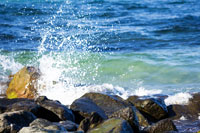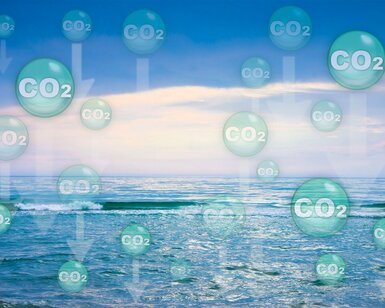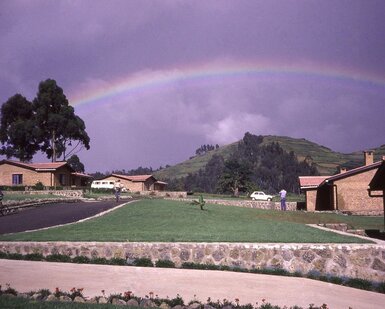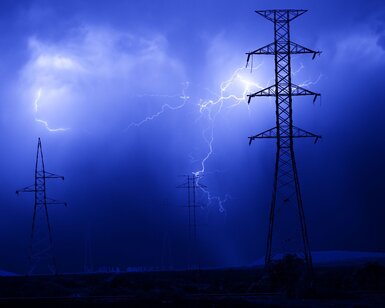Please type a search term (at least two characters)
News
Highlights under the first EMRP Environment theme
A key challenge facing Europe is the need to ensure sustainable growth, while protecting the environment and safeguarding our quality of life. Meeting the demanding requirements of environmental regulation and climate science presents a range of fundamental and practical measurement challenges. EURAMET's European Metrology Research Programme (EMRP) supports a coordinated approach to research in environmental measurement.
The joint research projects under the first call of the EMRP Environment theme focused on two areas: understanding, modelling and monitoring climate change and ensuring a safe and clean environment. The European Commission and national governments invested 40 million euros in collaborative environmental research involving research groups in 45 European National Metrology Institutes and Designated Institutes, along with 19 academic groups, 27 public agencies with environmental remits and 37 businesses. Find here a selection of highlights achieved in this first set of nine environment projects.

Improved data for Essential Climate Variables
Much of the data to monitor the internationally-agreed Essential Climate Variables is collected via the world's meteorological agencies. To ensure the relevance and uptake of the EMRP research by this community, EURAMET has deepened the relationship with the World Meteorological Organisation (WMO), international climatology networks and national meteorological organisations. WMO has become a member of the EURAMET Research Council and Environment Task Group that guides EMRP research, and the metrology community is represented on the expert teams of the WMO's Commission for Climatology and Commission for Instruments and Methods of Observation.
An NMI in space - supporting better climate data
EMRP research has made significant developments towards the goal of an 'NMI in space' that will calibrate and validate the climate data from Earth observation satellites. The metrology community worked closely with the European Space Agency and climate scientists to develop and test high-level metrology instrumentation for the space environment. The instrument, a primary radiometer, is capable of a radiometric accuracy of 0.3%, a factor of 10 improvement on previous traceability methods. The instrument is the key component of the planned TRUTHS mission (Traceable Radiometry Underpinning Terrestrial and Helio-Studies) that will establish an NMI in space.

Accuracy in the ocean - improved links to the SI units for oceanic data
Ocean circulation is a key component of the climate system and measuring its properties is essential for understanding its role and monitoring changes. EMRP research developed validated and traceable methods, tools and measurement standards for the calibration of ocean-based sensor networks and satellite systems for key ocean parameters including salinity, density, pH and composition of seawater. Significant achievements include the contribution of improved speed of sound data to the International Thermodynamic Equation of Seawater 2010 (TEOS-10) - a key tool in oceanography - and establishment of a link between the conductivity based practical salinity measurement and the SI units. The metrology community has joined the Joint Committee on Seawater, improving knowledge of metrology best practice among the oceanographic community.
Improving water quality - reducing harmful pollutants
The European Water Framework Directive specifies very low permitted levels of pollutants that present a significant risk to or via the aquatic environment. Toxic pollutants such as tributyltin (TBT), polybrominated diphenylether (PBDE) and selected polycyclic aromatic hydrocarbons (PAH) are particularly harmful as they are liable to accumulate in the food chain and endanger a wide range of living organisms. EMRP research developed validated primary reference methods based on isotope dilution for the analysis of these pollutants in whole water samples at the low levels required to comply with the Directive. These methods allow the quality of measurements made in public and commercial labs to be validated and are already being deployed in a number of European regions.

Improving air quality - reducing NO2 emissions
Improving air quality requires accurate measurements of pollutants at the low concentrations permitted by European regulation. EMRP research developed preparation methods for calibration gases for sulfurdioxid, nitric oxide and nitrogen dioxide (NO2) at or near the limit values of the regulation and a practical portable NO2 generator for cost-effective calibration of air quality sensors in the field. The NO2 generator has been used by the City of Zürich Health and Environment Department to calibrate its installed air quality sensors, enabling it to evaluate its pollution reduction strategy and maintain its lead in reducing city centre pollution.
Improving air quality - reducing particulates
Particulates are classified as carcinogenic by the World Health Organisation and each generation of the European emissions regulation reduces the levels permitted in vehicle exhausts. Euro 6, the latest version of the regulation, introduces a limit on particle number as well as particle mass. EMRP research developed a new validated aerosol for calibrating the condensation particle counters used to type-test and certify new engines and ensured its uptake through incorporation of measurement best practice in the relevant ISO standard. The research has supported the development of instrumentation for the new requirement for periodic emissions testing to include both static and on-road conditions. Together these developments in metrology are ensuring that new tighter regulation can be complied with and contribute to reduced harmful emissions.
Carbon dioxide, released from man-made activities, is lowering the pH of the Earth’s oceans, and impacting the health of marine organisms worldwide more
Supporting automated and reconfigurable manufacturing systems more
Working with external project Cool White to test and suggest improvements on the locally available white paints more
The project FutureEnergy has provided new calibration services for ultra-high voltages and a good practice guide on Lightning Impulse dividers more
For many of the 5000 photonics companies in Europe a precise knowledge of a material’s optical properties is vital for industrial competitiveness more





